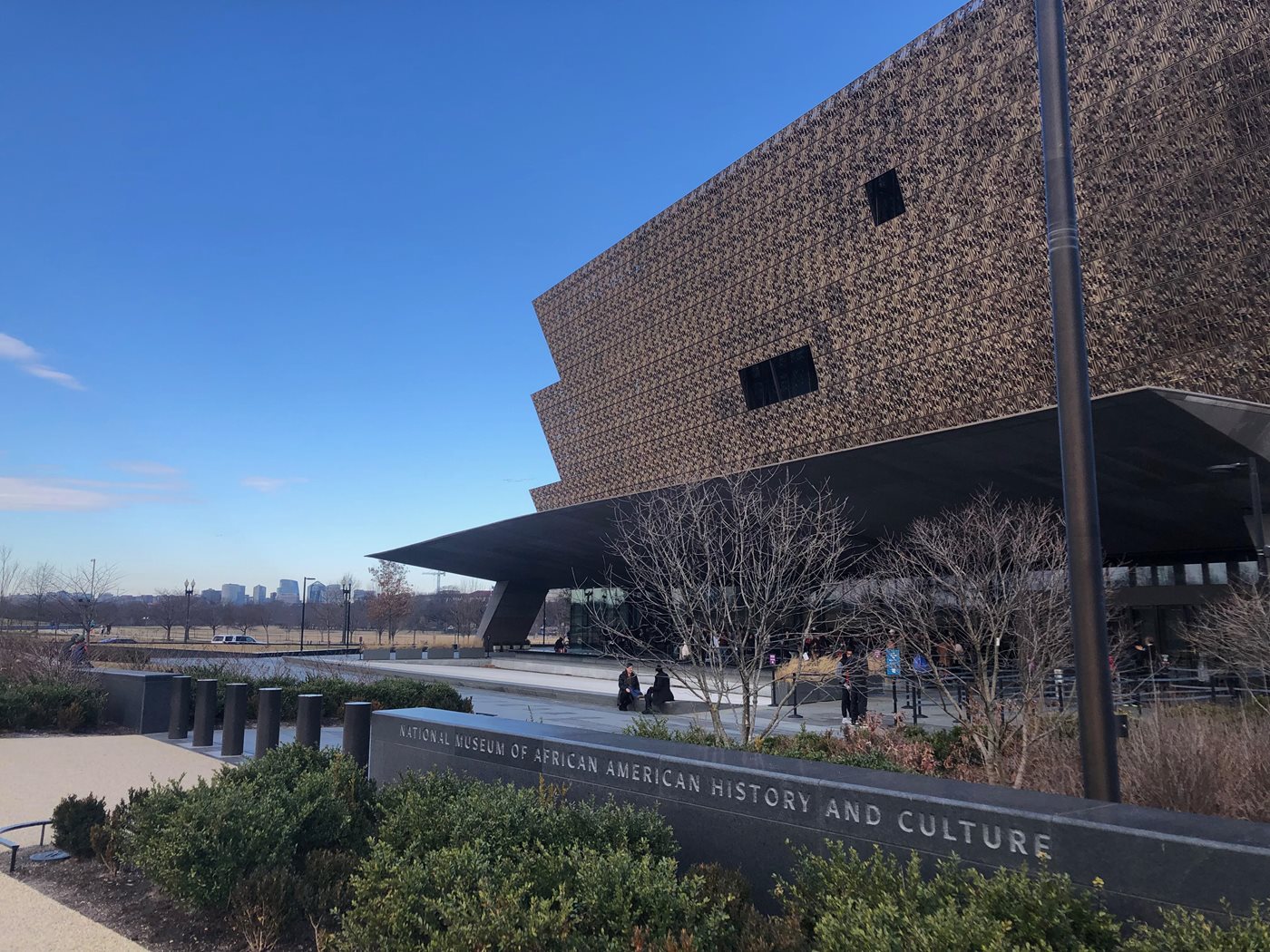March 2019

The exhibit starts with three floors underground, focusing on African American history. A giant elevator takes visitors down to –F3, with year marked on the wall from 2016 down to 1400. The part on transatlantic slave trade offers historical records on the names of slave ships, countries that operated the ships, and number of slaves survived/boarded. The museum even conserves archaeological remains such as slave shipwrecks and chains. It was such a powerful image that convey not only chilling emotions but also hard numbers to remind people that history.
Another powerful item on display is a Jim Crow era segregated railcar built in the early 20th century. From the windows, the visitors can see how fancy the white-only seats and restrooms are, and how simple and crowded the colored-only section is. The sharp differences can also be seen through a drinking water fountain. Compared to what we read about segregation in history books, the idea was perfectly communicated through real life items and settings.
The Emmett Till memorial is another very powerful education moment. People actually cry in the museum gallery while seeing the interview videos, newspaper coverage, Emmett’s mother’s words, and finally the open casket. Although the event was some half century ago, it still ponders people’s hearts. It’s been a while since the last time I felt so much emotions in a museum.
The above-ground floors have exhibits that showcases African American culture, including social activism, music and performance, and the spirits of sportsmanship. The amount of objects in collection is so impressive. Actually many people donated their precious personal collections to the museum so that the public can see them. You would be amazed to see Chuck Berry’s car, and Michael Jordan’s shoes. The second floor of the museum also features a family history research center, where the visitors can contribute to the oral history collections and with the help of curators, can start researching their family roots.
The museum café is another thing you don’t want to miss. As someone who doesn’t come from the rich African American culinary traditions, I enjoyed their dishes very much. There’s a variety to choose from as well. I mean, who wouldn’t want to taste the heritage via delicious food?
Something to bear in mind is that although the museum offers free admission, in peak seasons, they require timed pass for entry. Please check their website: https://nmaahc.si.edu to make sure that you can obtain the pass ahead of time. Other than that, I hope y’all will have the chance to visit this amazing museum sometime in the future, and happy Black History Month!
--- Mingqian Liu
Mingqian Liu is a Ph.D. student in the College of Architecture